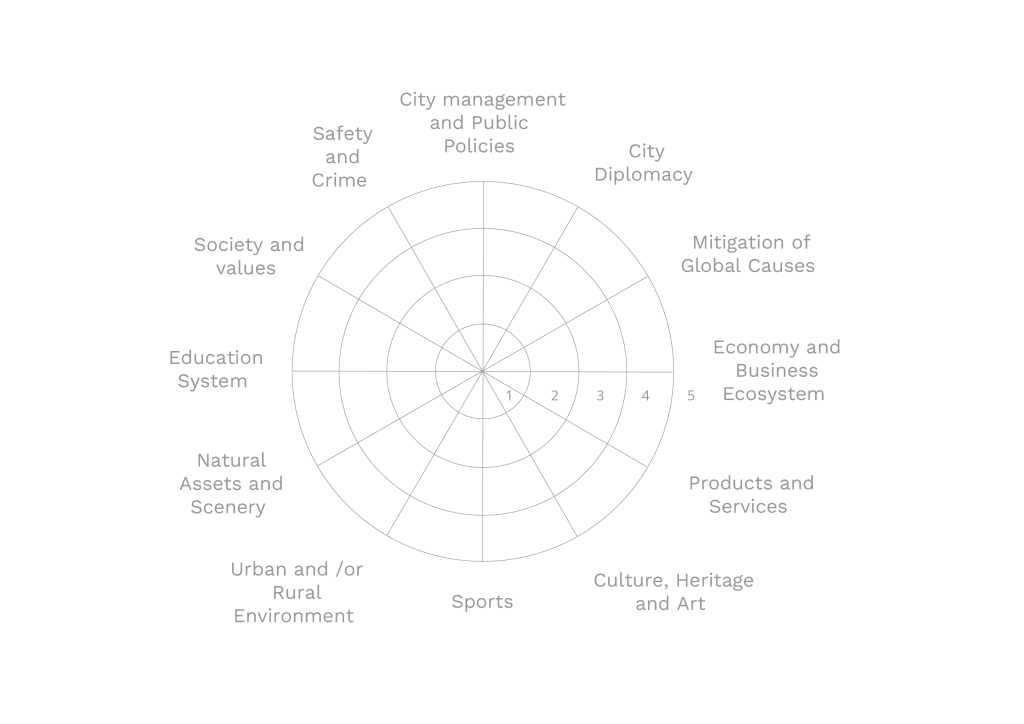We now live in a world where the ‘digital world’ is the real world. Whatever information there is available online about a Nation or City, directly influences perception. And research has now proven that this perception directly influences people’s decision whether to relocate to, invest in, or visit a Country or City. As we enter a new era of Nation and City Branding, it’s time to explore the evolution of City Branding 2.0. This article offers a practical guide, outlining 5 tips to improve the Digital Identity of a City Brand.
What is the Digital Identity of a City Brand?
The Digital Identity of a City begins, more often than not, with a search engine. Today, perception is shaped by influence: what people see first often defines what they believe. When someone searches for your city online, the first page(s) of results essentially shape their immediate and possibly lasting impression. These results, whether curated intentionally or generated organically, have become a critical brand touchpoint. While many now use AI tools to ask questions, these tools still largely rely on information listed in search engines results, making search visibility more important than ever.
This article explores a proactive approach to Digital Identity management, emphasizing that this digital layer is no longer optional for City Brands; it is foundational. Research, strategy, implementation, and measurement are the pillars of success. Each plays a vital role in ensuring that a City’s digital presence is not only consistent and attractive, but also truthful, relevant, and adaptable.
1-Define and Align Your Core Digital Identity With Reality
Before anything else, a city must define what it stands for, its Central Idea, what is at the heart of its strategy. A strong Digital Identity begins with clarity: a clear articulation of how the city wants to be perceived and who it aims to reach. Ensure that your City Brand strategy is grounded in reality: what your City actually is and offers. If this alignment is missing, no amount of digital effort will be sustainable.

2-Measure and Monitor Your Digital Brand Performance
Once your core Digital Identity and strategy are defined, the next tip is to monitor how your City performs online. This means stepping into the shoes of those searching for it. Tools like Digital Demand © and Digital Supply © help you understand both what people are looking for and how your City is perceived. Regular monitoring of media and platforms allows you to engage with or correct narratives that do not align with your brand.
Review what ranks highest when people search your city online. Is it outdated information, an unflattering news story, or content aligned with your City Brand’s current strategic goals? It’s important to recognize that third-party content holds significant credibility. The more independently people talk about your city in a positive and authentic way, the more trustworthy your Digital Identity becomes.
But beyond what is visible, it is equally important to understand what is missing. Identifying content gaps means comparing what people are searching for with what they are actually finding. Digital Supply © supports this analysis through Brandtags: key terms that reveal the topics most commonly associated with your City.
For example, if someone searches “startups in Helsinki,” do they find fresh, relevant information or outdated and irrelevant results? The same applies to searches like “tech jobs in Durban,” “green technology in Shenzhen,” or “arts scene in Philadelphia.” These content gaps present a chance for your City Brand to take control of its narrative. Brandtags help you identify where to begin adjusting your content to better reflect your City’s Central Idea.
3-Tell the Right Story to the Right Audiences
A key factor in shaping a strong Digital Identity is understanding that different audiences search for different content. Tourists, investors, talent, residents and global citizens in general all look for information that speaks directly to their interests and needs. For example, if your city is attracting a growing number of French-speaking residents, it’s important that key information about citizenship is available in French. If international talent is a focus, make sure resources about living, working, and opportunities are visible and up to date in the languages and formats they are likely to engage with.
The Bloom Consulting City Brand Taxonomy Model © serves as a guide for City Brand Managers to tell the right story to the right audiences based on the 12 Perception Elements that constitute one’s perception of a city.

Another overlooked aspect of a City’s digital strategy is platform relevance. Telling your brand story on the wrong channel is like speaking the right language in the wrong room. Don’t copy-paste the same information across channels. Instead, develop platform-specific content that reflects your City Brand in a way that feels native to each space.
4-Align Content With Strategy—And Keep It Fresh
Your digital presence is only as strong as your most visible content. Outdated or irrelevant pages ranking high in search results can quickly misrepresent your City and weaken your credibility.
Search engines prioritize updated, relevant, and authoritative content. Consequently, AI tools rely on this up-to-date information to generate responses. Take ownership by ensuring your official sources (government websites, tourism portals, investment hubs) are search-optimized and regularly updated. This helps push relevant content up in rankings and displace irrelevant or misleading information.
5-Stay Flexible: Continuously Adapt Based on Data
And lastly, a strong Digital Identity is a living system, not a one-time launch. Audience behavior, search trends, platform algorithms, and public sentiment evolve, so your Digital Identity should evolve with them. By staying adaptive, your City can remain relevant while consistently reinforcing its identity in a fast-moving digital world.
Conclusion: Navigating the Era of City Branding 2.0
In the digital age, a City Brand is only as strong as its top search results. The story people see online is the story they believe, and the story they act upon.
By taking a proactive, strategic, and continuously adaptive approach to your Digital Identity, your City can rise above noise and misinformation to present a compelling, credible, and competitive narrative to the world.
Published on 26.06.2025.
Cite article:
Bloom Consulting (2025). 5 Tips to Improve the Digital Identity of a City Brand. Bloom Consulting Journal, 26 June. Available at: https://www.bloom-consulting.com/journal/5-tips-to-improve-the-digital-identity-of-a-city-brand/








